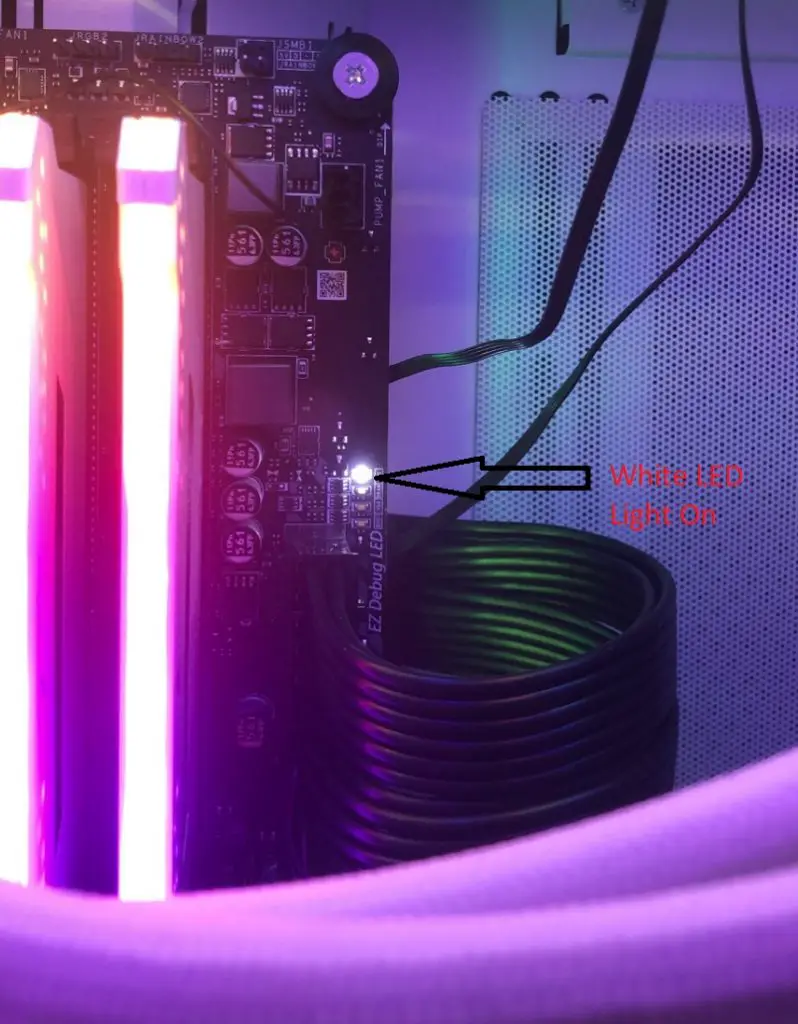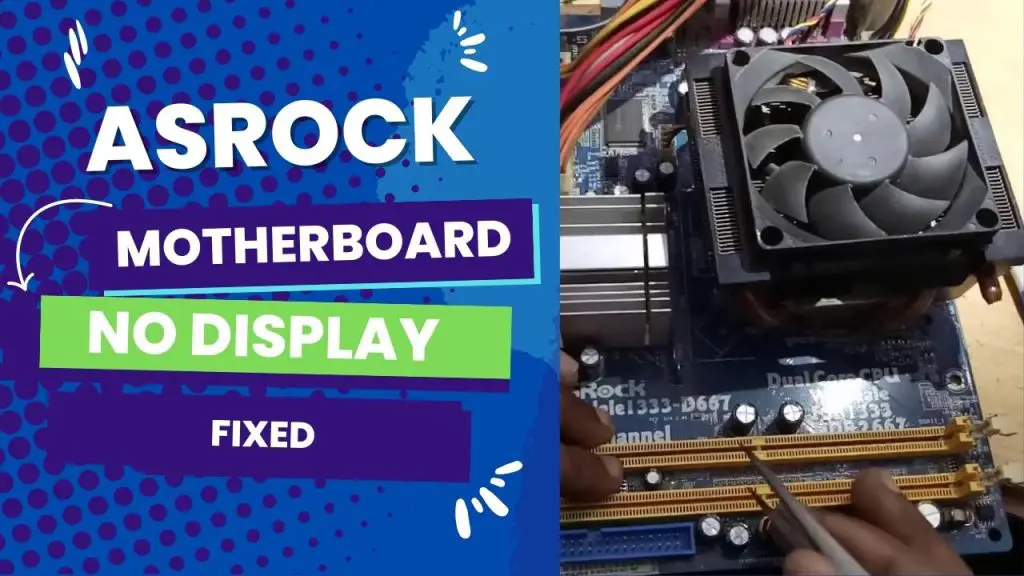The best cooling methods for an Asrock motherboard to help it run smoothly and avoid overheating are a heat sink, CPU fan, thermal paste, or liquid or vapor cooling. These options can help eliminate heat and lower the energy used by the processor, keeping your motherboard cool and working well.
Whether you choose a simple fan or a more complicated cooling system, follow the manufacturer’s instructions and take the necessary precautions when installing and using these cooling methods.
As you already know, heat can stress your computer’s CPU and GPU, among other components, leading to slower performance, abrupt crashes, or frustrating freezes.
Best Asrock Motherboard Cooling Methods
Overheating can shorten the life of the average Asrock motherboard, especially if it damages plastic parts and wires.
Asrock’s high-end Asrock X570 Aqua motherboard was on display at Computex 2019 in Taipei, Taiwan. It features an all-in-one water cooling block with a copper cooling armor and a one-piece design with a water path system. This is designed to help the CPU, VRM, and chipset eliminate heat as efficiently as possible.
These are the best cooling methods you can use to cool your motherboard and bring out the best in your device and prolong its lifespan:
1. Using Heat pipes
Heat pipes are passive cooling devices that you can use to transfer heat away from a component such as the CPU or GPU. They are frequently used on high-performance motherboards to keep the system cool.
Not all Asrock motherboards are designed with heat pipes, but the few models with this cooling feature include but are not limited to: Asrock B450M pro4 and pro4-F, Asrock X570 Phantom Gaming 4 and X, Asrock X570 Taichi, Asrock X570 Pro 4, and even Asrock X570M pro4.
2. Using Multiple Cooling Fans
Some Asrock board models have fans attached beside the processor, while others are fixed in the case to move heated air away from the components and draw cooler air over them. The fan RPM range ultimately depends on the motherboard model.
For instance, the Asrock X570 Taichi has six fan headers, four clustered around the CPU socket and one fixed along the bottom of the board.
3. Using Thermal paste or thermal pad
Many Asrock motherboards are equipped with pre-applied heat sinks and fans since they come with NVMe covers. The thermal paste, grease, or compound is on the processor. Since it is between the heat sink and the processor, it helps spread the heat evenly.
4. Using Water cooling
In this cooling method, the liquid is circulated through a heat sink mounted on the CPU so that the heat from the processor is transferred to the liquid, making it hot.
The hot liquid is then moved to the back of the system, where it is converted to heat and emitted out of the case.
Some Asrock Aqua systems need to be refilled with liquid every so often, but they use thermodynamics to work in either closed-loop or open-loop systems.
For most high-end motherboards, the distilled water circulates through water blocks, cooling the air as the cool water passes through.
5. Heat sink
Some Asrock motherboards are designed with a block of metal, usually made of aluminum or copper, attached to the top of the processor or other components in the unit.
In such a way, the heat emitted from the processor is conveyed to the heat sink and then transferred by the airflow throughout the computer case. This engineering reduces the processor’s energy consumption and heat for improved performance.
6. Vapor cooling (phase change cooling)
This is an expensive cooling option on Asrock motherboards, and its mechanisms are similar to how refrigerators work. Here, gas is turned into liquid, a big part of the Asrock Phantom gaming edition chassis.
Although we have the Asrock Aqua line of motherboards that come with liquid monoblocks that let you cool the processor, CPU VRM, and chipset DIY, it is possible to use phase change cooling. Still, you have to be willing to spend a lot of money to have multiple components under sub-zero cooling.
That is, having two-phase coolers and maybe even separate household circuits for them to run on
7. Passive cooling
Passive cooling is typically used with other cooling methods, such as active cooling with fans, to help keep the system cool.
It is particularly useful for motherboards where noise is a concern since it does not generate noise. Several Asrock motherboards have passive cooling, which means they don’t use fans to get rid of heat but instead use heat sinks and other passive cooling devices.
DIY Cooling Techniques for Asrock Computers
No matter the cooling option incorporated in a computer set, your system’s components are at risk of overheating if you don’t keep the temperatures in check.
Whether you are a full-time gamer or a regular computer user and you own an Asrock motherboard, here are a few DIY cooling approaches to consider:
Consider the position of the computer.
It is a general rule of thumb to keep your system away from windows and vents where temperatures are often saturated. An approach as mundane as adjusting the location of your system can go a long way toward keeping it cool.
Stop opening the system’s case.
Many Asrock owners believe opening the board case will help regulate internal temperatures, but that is a myth. Closing the case is a good way to repel dust and debris, which can find a way into the cooling fans.
And as you know, too much dirt on the fans can slow their rotating speeds. So aside from aesthetics and protection of internal components, the case is also there for effective air handling. This leads us to the next point.
Cleaning your fans
Depending on the Asrock motherboard model, some fans will be positioned in areas of the motherboard where dust and dirt can easily wreak havoc on their performance. As your system’s first temperature defense line, you must regularly keep it clean.
In rare cases, Asrock usually equips its boards with fans on the CPU, inside the power supply, and in front. I recommend you use a canned air duster to get this done instead of a vacuum.
Upgrade your CPU fan.
CPUs have a higher chance of overheating than other components in the computer. With some Asrock motherboards designed with lower-end fans, you may need to upgrade to a better CPU fan to function beyond just cooling the processor to keep it running and keep the CPU temperature down.
Consider a water-cooling kit.
In some situations, even the fastest fans can’t keep up with the temperature requirements. This often happens on gaming motherboards designed with high-end CPUs and overclocked components.
One of the ways to cool your system in these situations is to use a water cooling kit that will pump old water down to the CPU in self-contained tubes and then back to the radiator, where it can be cooled before returning to the CPU for rotational cooling.
While water cooling kits are relatively affordable, some Asrock motherboards, especially the AQUA lineups, live up to expectations and are worth your investment.
Conclusion
The bottom line is that Asrock motherboards do offer a range of cooling methods to keep your system running smoothly and efficiently. Asrock has options for every budget and level of performance, from simple passive cooling to high-tech water cooling.
But it’s important to carefully think about your cooling needs and choose a motherboard that meets those needs and fits with the rest of your system.
By following the proper installation and maintenance guidelines, you can ensure that your Asrock motherboard stays cool and performs at its best for years to come.





